Traveling with expensive equipment, such as cameras, can be a daunting endeavor. From the fear of damage or loss to the concern of navigating through airport security, many individuals struggle with finding the best methods to transport their valuable gear. In this article, the focus will be on exploring effective strategies and tips for traveling with expensive equipment, empowering individuals to undertake their adventures with peace of mind and ensuring the safety of their precious belongings.
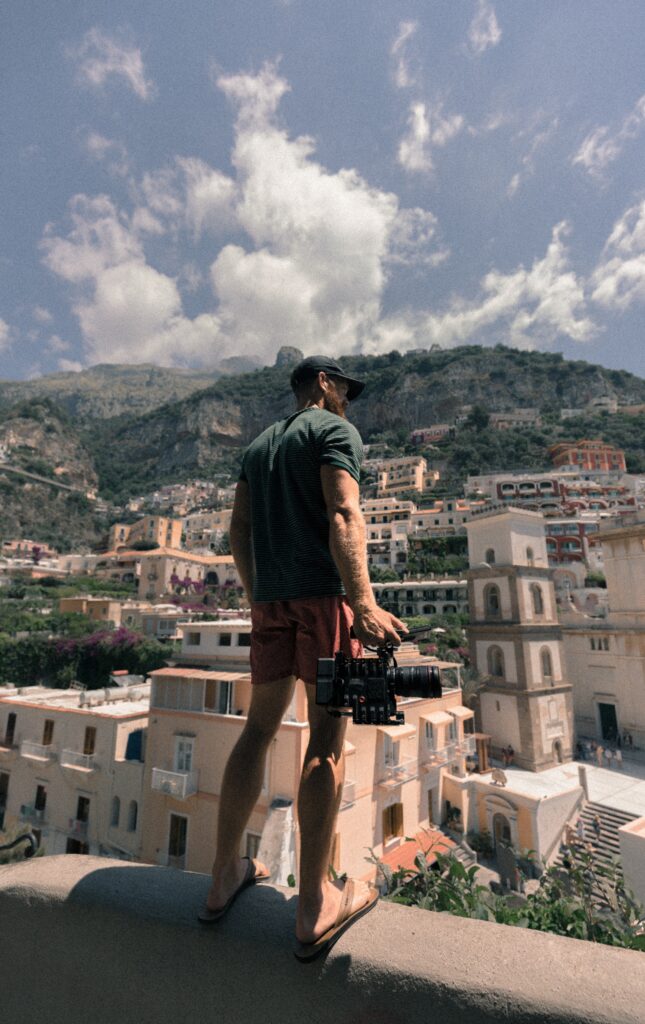
Table of Contents
Choosing the Right Bag or Case
When it comes to traveling with expensive equipment like cameras, one of the first and most important considerations is the choice of bag or case. It is crucial to find a bag or case that not only accommodates the size and weight of the equipment but also provides adequate protection. Here are some factors to consider when choosing the right bag or case.
Consider the Size and Weight of the Equipment
The size and weight of the equipment should be the primary factors to consider when selecting a bag or case. It is important to choose a bag that can comfortably fit the equipment without being too bulky or cumbersome. Additionally, the bag should have sufficient padding and support to ensure that the equipment is protected from any impact during travel.
Opt for a Bag with Padded Compartments
To protect expensive equipment such as cameras, it is advisable to opt for a bag with padded compartments. These compartments provide additional cushioning and prevent the equipment from getting scratched or damaged while in transit. Padded compartments keep the equipment securely in place and minimize any movement that could cause potential harm.
Look for a Bag with Weatherproofing
When traveling with expensive equipment, it is crucial to ensure that the bag or case provides adequate weatherproofing. This will protect the equipment from sudden weather changes, spills, or accidents. Look for bags or cases made from durable and water-resistant materials that provide an extra layer of protection against rain, snow, or moisture.
Consider a Hardshell Case for Extra Protection
For those who require extra protection for their expensive equipment, investing in a hardshell case is highly recommended. Hardshell cases are often made from impact-resistant materials such as ABS or polycarbonate, which can withstand rough handling and provide maximum protection against impact or crushing forces. These cases usually have foam inserts that can be customized to fit the equipment securely.
Ensure Proper Packing and Organization
Proper packing and organization of equipment are essential for a hassle-free travel experience with expensive items like cameras. By following these tips, one can ensure that the equipment remains safe and well-organized throughout the journey.
Use Lens Cases and Pouches for Added Protection
To protect lenses from scratches and accidental damage, it is advisable to use separate lens cases or pouches. These cases provide additional cushioning and prevent lenses from coming into direct contact with other equipment, reducing the risk of damage during travel. Lens cases and pouches also make it easier to organize and locate specific lenses when needed.
Invest in Customizable Foam Inserts
For equipment that requires a high level of protection, investing in customizable foam inserts is a sensible choice. These inserts can be shaped and molded to fit the exact dimensions of the equipment, providing a snug and secure fit. Customizable foam inserts also help distribute the weight evenly, reducing the risk of damage caused by movements or vibrations during travel.
Wrap Fragile Items in Bubble Wrap or Soft Cloths
Fragile items such as camera bodies or delicate accessories should be wrapped in bubble wrap or soft cloths for added protection. Bubble wrap acts as a shock absorber, reducing the impact of any rough handling or accidental bumps. Soft cloths can also help prevent scratches or scuffs on sensitive surfaces.
Separate Accessories and Cables with Small Organizer Pouches
To avoid tangling or misplacing cables and smaller accessories, it is advisable to use small organizer pouches. These pouches help keep everything neatly organized and easily accessible during travel. Separate compartments within the pouches also minimize the risk of damage due to items rubbing against each other.
Carry-On vs. Checked Luggage
Choosing between carry-on and checked luggage is an important decision when traveling with expensive equipment. Each option has its pros and cons, and understanding them can help ensure the safety and convenience of the equipment throughout the journey.
Choose Carry-On for Essential Equipment
Carrying essential equipment in a carry-on bag is highly recommended, especially when traveling by air. By keeping the equipment within sight and within reach, one can minimize the risk of loss, theft, or mishandling. In case of any unforeseen issues with checked luggage, having the essential equipment in a carry-on bag ensures that the photography or filming plans are not entirely derailed.
Ensure Checked Luggage Meets Airline Requirements
If the equipment needs to be stored in checked luggage, it is essential to ensure that the luggage meets the airline’s requirements. Different airlines have specific guidelines for the dimensions, weight, and packaging of checked items. Familiarizing oneself with these guidelines and adhering to them ensures a smooth check-in process and reduces the risk of damage.
Consider Insuring Checked Luggage
Since checked luggage is more susceptible to mishandling, loss, or theft, it is wise to consider insuring the contents of checked bags. Many insurance providers offer coverage specifically for valuable items such as cameras and electronics. Insuring checked luggage provides an added layer of protection and peace of mind, knowing that the equipment is financially safeguarded.
Securing the Equipment
Ensuring the security of expensive equipment is paramount, particularly when traveling to unfamiliar places or crowded environments. Implementing security measures can deter theft and prevent unauthorized access to the equipment during travel.
Invest in Secure Luggage Locks
Investing in secure luggage locks is an effective way to deter theft and unauthorized access to the equipment. Look for locks made from sturdy materials, preferably with a combination or key mechanism that offers additional security. When choosing luggage locks, ensure they are compliant with Transportation Security Administration (TSA) regulations to avoid any inconvenience during security checks.
Use Travel Security Devices such as Cable Locks
Travel security devices such as cable locks provide an extra layer of security for securing the equipment. These locks can be used to secure bags or cases to fixed objects, making it more difficult for thieves to snatch or access the equipment unnoticed. Cable locks are particularly useful when leaving the equipment unattended in hotel rooms or other public spaces.
Consider Tamper-Evident Seals for Checked Luggage
For additional peace of mind when traveling with checked luggage, tamper-evident seals can be employed. These seals are designed to show visible signs of tampering or opening, signaling any potential security breaches. By applying tamper-evident seals, one can easily identify if the equipment has been tampered with or accessed in their absence.
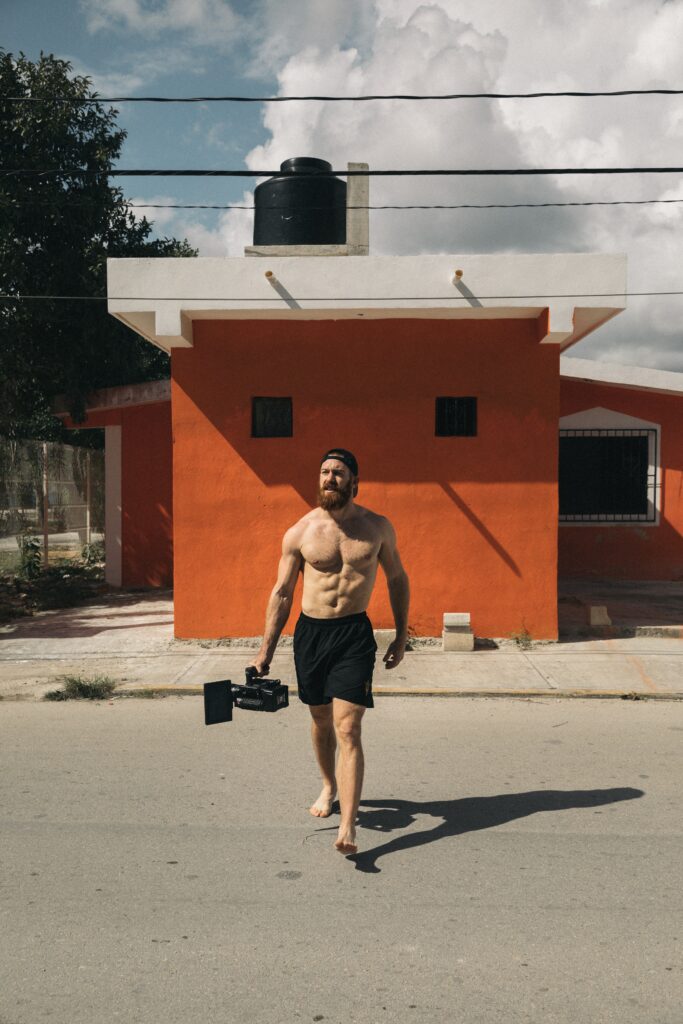
Prevent Theft and Loss
Preventing theft and loss of expensive equipment requires taking proactive measures and being vigilant throughout the travel journey. By following these tips, one can minimize the risk of becoming a victim of theft or losing valuable equipment.
Keep Valuables in Sight and within Reach
keeping valuables in sight and within reach is essential, especially in crowded places or during transit. It is advisable to carry camera bags or cases in front of the body, rather than on the back, to deter potential pickpockets. By maintaining visual contact with the equipment, one can quickly notice any suspicious activity and prevent theft.
Use Discreet Bags or Camera Inserts
Instead of using bags that scream “expensive camera equipment inside,” opt for more discreet options when traveling with expensive gear. Choose bags that do not attract unnecessary attention or advertise the contents within. Additionally, consider using camera inserts that can be placed into regular backpacks or bags, providing an additional layer of camouflage.
Avoid Drawing Attention to Expensive Equipment
To avoid unwanted attention, it is advisable to refrain from openly displaying expensive equipment in public places. When shooting or using the equipment, look for ways to minimize attention, such as using neutral camera straps or discreetly changing lenses. By being discreet and less conspicuous, the risk of attracting potential thieves is significantly reduced.
Consider Travel Insurance for Added Protection
Travel insurance is an extra layer of protection that can provide coverage for lost, damaged, or stolen equipment. Different insurance policies offer varying levels of coverage, so it is important to carefully review the terms and conditions. When selecting travel insurance, look for policies that specifically cover expensive equipment like cameras and ensure the coverage meets one’s specific needs.
Prepare for Airport Security
Airport security procedures can be stringent, especially when it comes to electronics such as cameras. Being prepared for these procedures can help ensure a smoother process and avoid any potential delays or issues.
Research TSA Regulations for Electronics
Before traveling, it is important to research and familiarize oneself with the Transportation Security Administration (TSA) regulations regarding electronics. These regulations outline the specific requirements for screening electronic devices at airport security checkpoints. By adhering to the guidelines, one can minimize the likelihood of encountering any complications during the security screening process.
Keep Batteries and Chargers Easily Accessible
To facilitate the security screening process, keep batteries and chargers easily accessible within the carry-on bag. Security officers may request to inspect these items separately from the camera or other equipment. By ensuring easy access, there will be no delays or confusion during the security check.
Avoid Wrapping Equipment in Aluminum Foil or Metal
When packing camera equipment, it is important to avoid wrapping it in materials that can interfere with the security scanning process. Wrapping equipment in aluminum foil or using metal cases can trigger alarms and require additional screening, causing unnecessary delays. Instead, use bags or cases made from non-interfering materials to prevent any complications at security checkpoints.
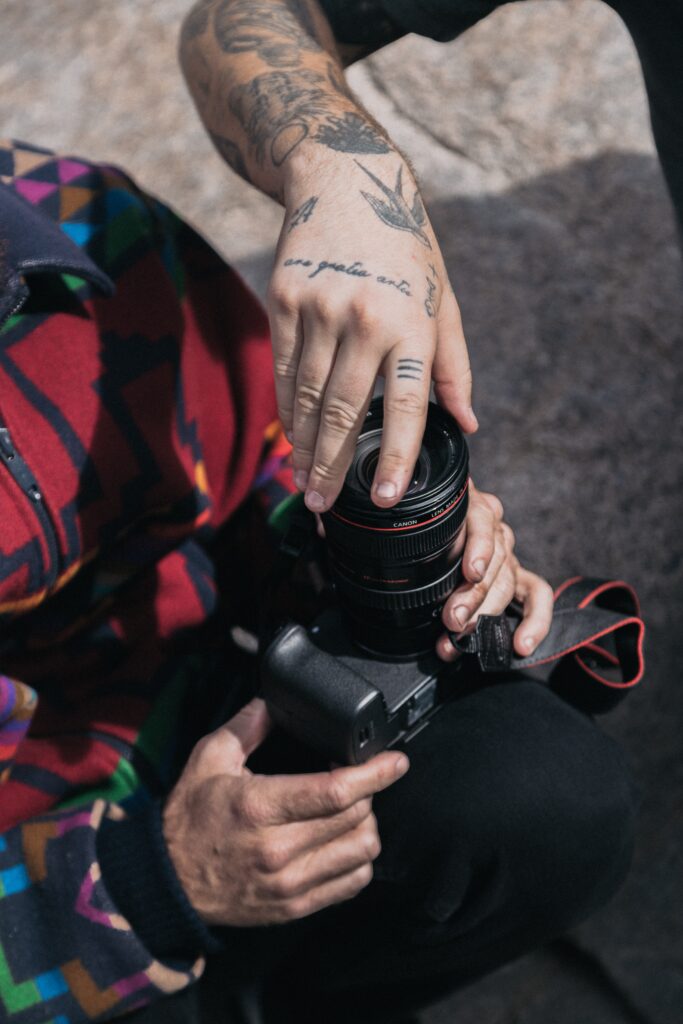
Stay Vigilant During Travel
Being vigilant throughout the travel journey is crucial to ensure the safety and security of expensive equipment. By adopting certain habits and taking precautions, one can minimize the risk of incidents and ensure a smooth travel experience.
Never Leave Equipment Unattended
It is essential to never leave expensive equipment unattended, particularly in public spaces or areas with high foot traffic. Always stay with the equipment or store it securely when not in use. Leaving equipment unattended increases the risk of theft or accidental damage, even if only for a brief moment.
Keep an Eye on Bags during Transfers
During transfers, it is important to keep a close eye on bags containing expensive equipment. Pay attention to the surroundings and ensure that bags are not left unattended or out of sight. By maintaining constant vigilance, the risk of theft or loss during transfers can be significantly reduced.
Inform Travel Companions about Fragile Equipment
When traveling with companions, it is essential to inform them about the presence of fragile or expensive equipment. This awareness will ensure that everyone is mindful and takes appropriate precautions to handle the equipment carefully. By communicating openly, the likelihood of accidental damage or mishandling is minimized.
Holster or Sling Bags for Quick Access
For quick and convenient access to cameras and equipment, holster or sling bags can be an ideal choice. These bags feature a single strap design that allows for easy and swift access to equipment without the need to remove the entire bag. When considering holster or sling bags, certain factors should be taken into account.
Choose a Comfortable and Adjustable Strap
When selecting a holster or sling bag, it is important to choose one with a comfortable and adjustable strap. The strap should be wide enough to distribute the weight evenly across the shoulder or body and prevent strain or discomfort. Adjustability enables customization for better ergonomics and a more secure fit.
Ensure the Bag Provides Adequate Padding
To protect cameras and equipment from accidental bumps or impact, ensure that the holster or sling bag provides adequate padding. The padding should be sufficient to absorb any shocks or vibrations during travel, safeguarding the equipment from potential damage. Well-cushioned compartments within the bag also enhance organization and prevent equipment from shifting.
Look for Additional Safety Features
When choosing a holster or sling bag, it is beneficial to consider additional safety features that enhance the overall security of the equipment. Features such as lockable zippers, discreet pockets, or even built-in anti-theft mechanisms can provide peace of mind and further deter potential thieves or unauthorized access.
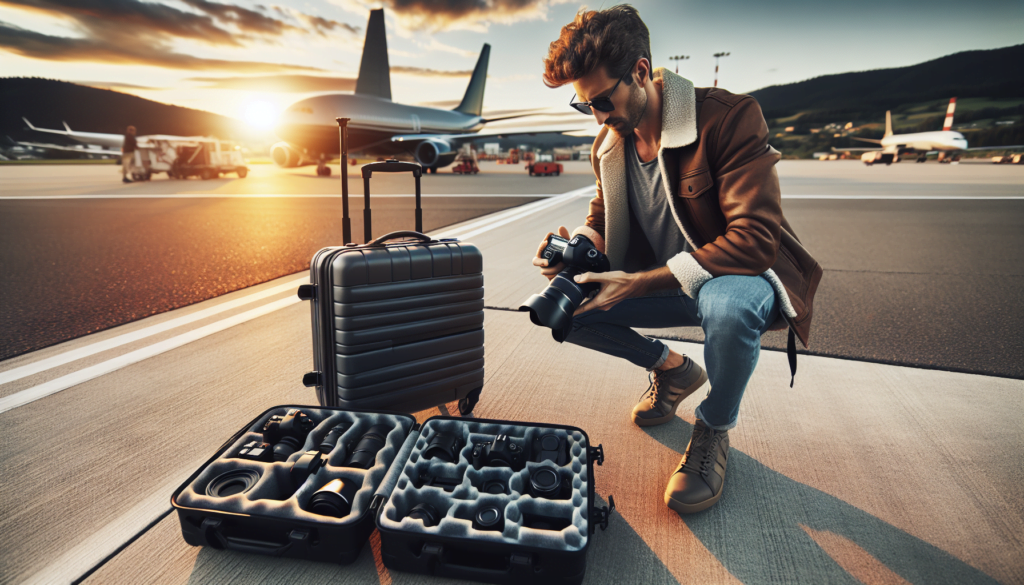
Tips for Air Travel
Air travel often requires additional considerations and precautions when traveling with expensive equipment like cameras. By following these tips, one can navigate the air travel process with confidence and minimize the risk of damage or loss.
Carry a List of Equipment and Its Value
Carrying a detailed list of the equipment and its corresponding value is advisable, especially when traveling by air. This list can be used for insurance purposes, as proof of ownership, or in case of any incidents during transit. Having a comprehensive inventory readily available can streamline any necessary processes should the need arise.
Arrive Early to Allow for Extra Security Checks
To ensure a smooth travel experience, it is crucial to arrive at the airport early, allowing ample time for additional security checks. Security procedures for electronics and expensive equipment may require extra time and attention, and arriving early prevents any unnecessary rush or stress. Allowing sufficient time also enables one to carefully repack and reorganize equipment after passing through security checkpoints.
Consider Pre-Boarding for Extra Assistance
If assistance is needed with handling and stowing expensive equipment, it is worth considering pre-boarding options. Pre-boarding allows additional time and space to secure the equipment before other passengers board the aircraft. Taking advantage of pre-boarding minimizes the risk of the equipment being accidentally bumped or damaged by other passengers’ belongings.
Insurance and Warranty Consideration
Given the value and importance of expensive equipment like cameras, insurance and warranty considerations are essential. Understanding the available options and choosing the right coverage can provide financial protection and peace of mind.
Check Your Existing Insurance Policies
Before investing in additional insurance coverage, it is important to review existing insurance policies. Some homeowner’s or renter’s insurance policies may already provide coverage for personal belongings and equipment, even when traveling. Understanding the coverage limits and exclusions within existing policies can help determine if any additional insurance is necessary.
Consider Purchasing Equipment-Specific Insurance
To ensure comprehensive coverage for expensive equipment, it is advisable to consider purchasing equipment-specific insurance. These policies are designed to protect high-value items such as cameras, lenses, and other photography gear. Equipment-specific insurance typically covers theft, accidental damage, loss, and other unforeseen events not covered by general travel or homeowner’s insurance.
Look for Extended Warranty Options
When purchasing new equipment, it is worth exploring extended warranty options. Extended warranties often provide coverage beyond the standard manufacturer’s warranty, offering peace of mind against potential defects or malfunctions. Before opting for an extended warranty, carefully evaluate the terms, coverage period, and any additional costs involved.
In conclusion, traveling with expensive equipment like cameras requires careful planning and consideration. By choosing the right bag or case, ensuring proper packing and organization, understanding carry-on vs. checked luggage options, securing the equipment, preventing theft and loss, preparing for airport security, staying vigilant during travel, investing in holster or sling bags for quick access, following tips for air travel, and considering insurance and warranties, one can travel with peace of mind, knowing their valuable equipment is protected and secure.
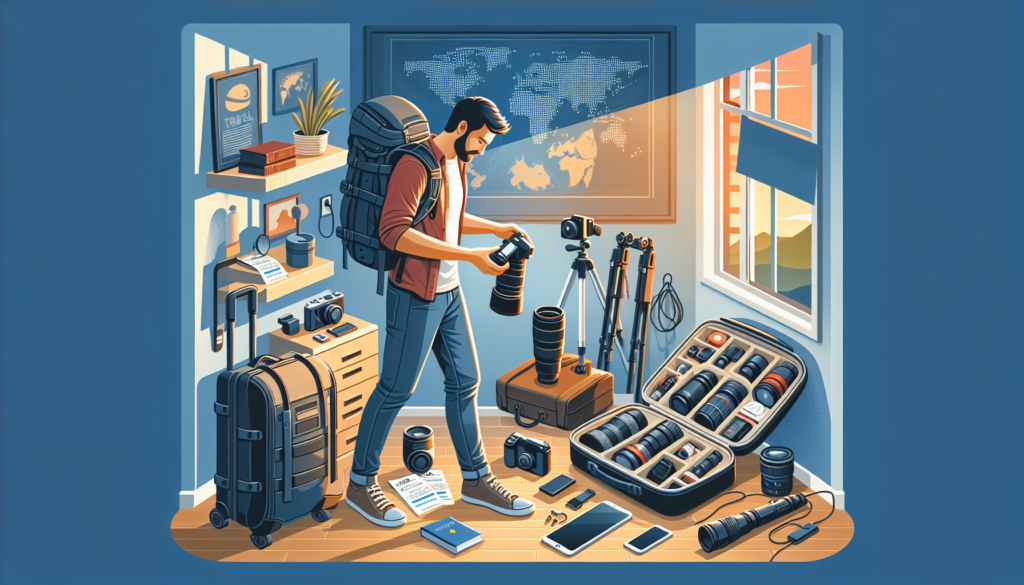
Related site – How to Travel with Camera Equipment (Nature TTL)
